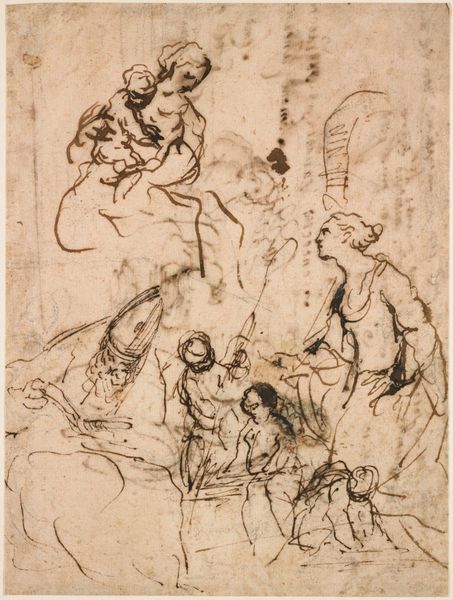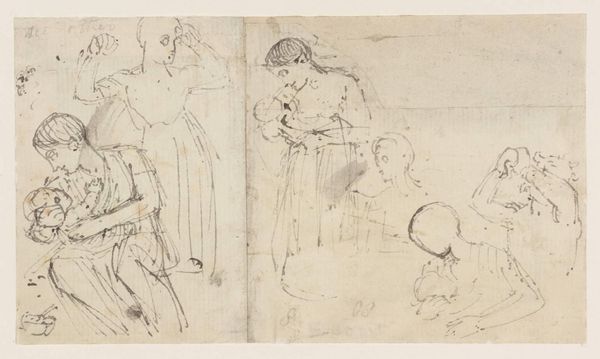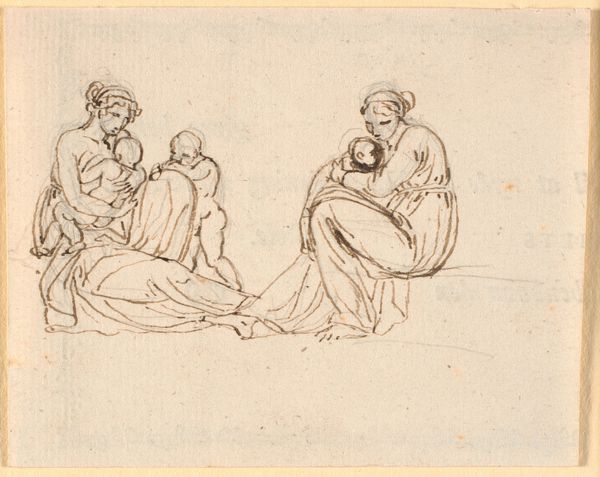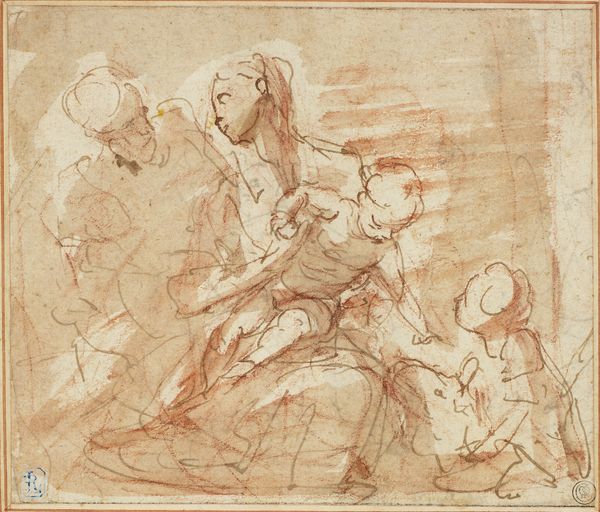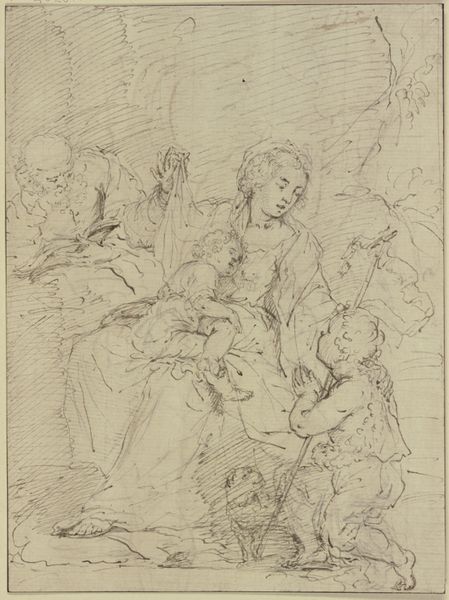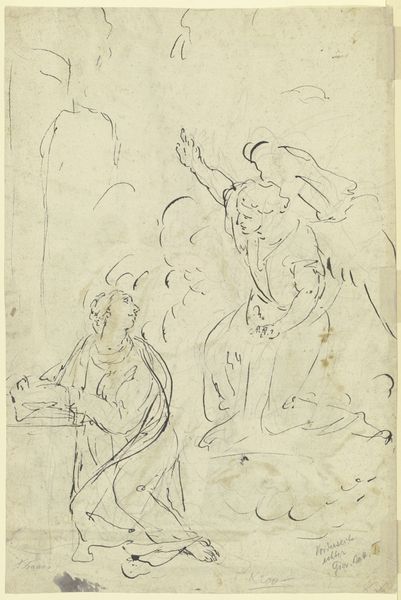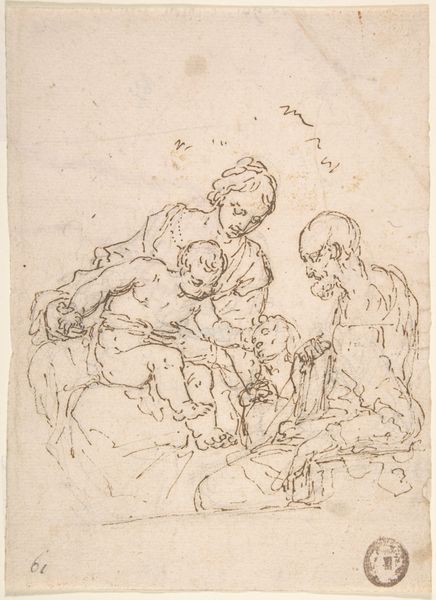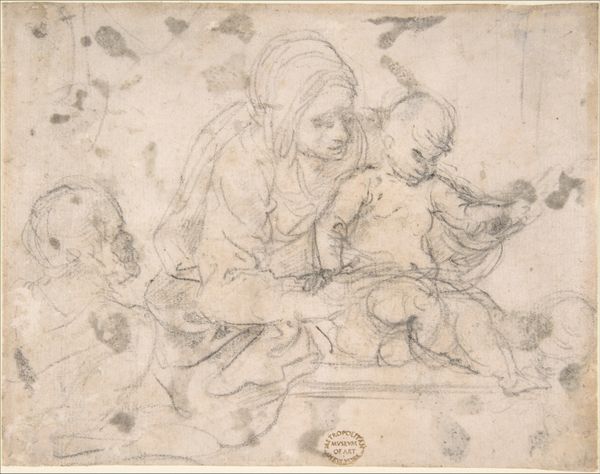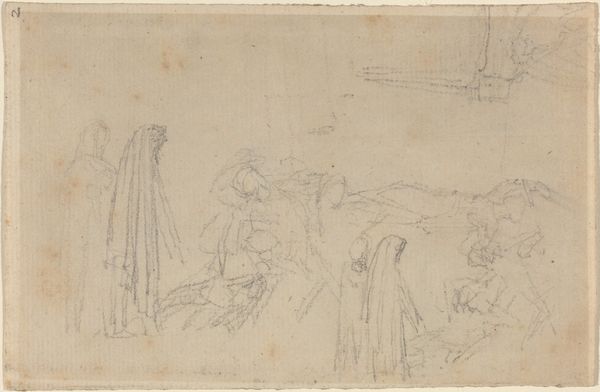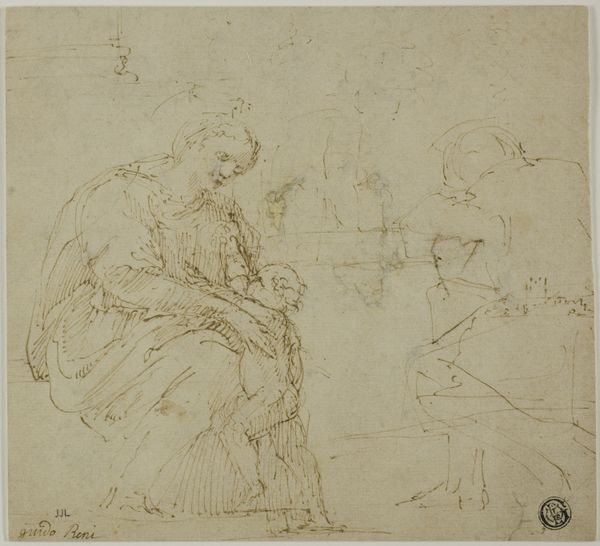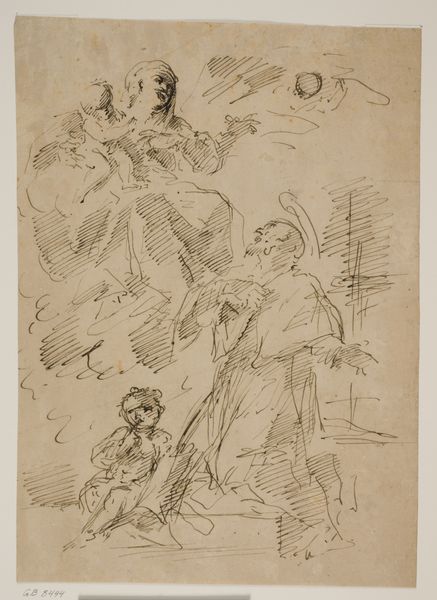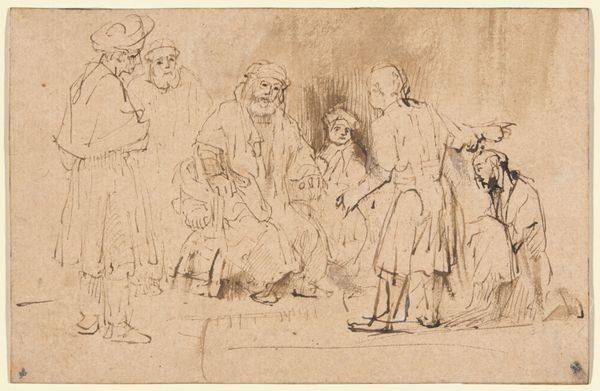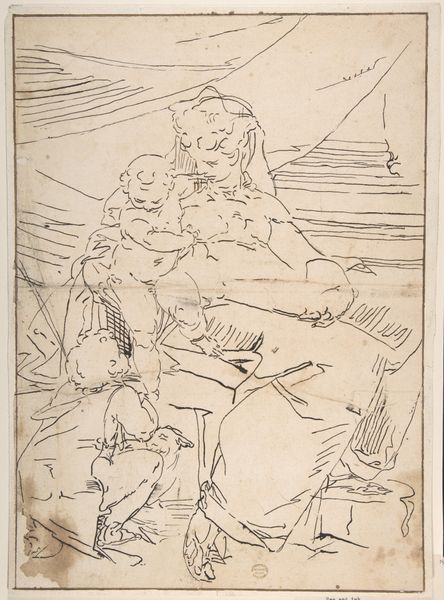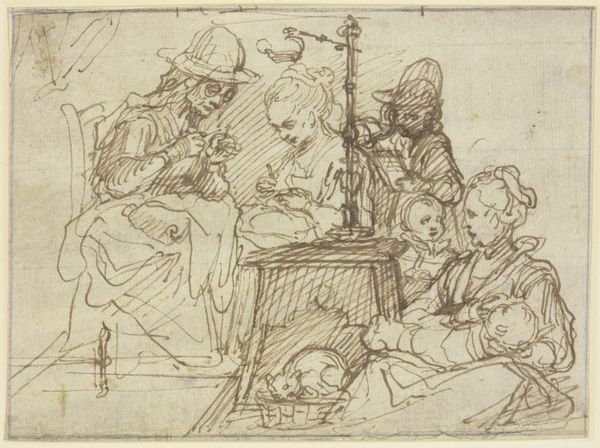
drawing, ink
#
portrait
#
drawing
#
baroque
#
figuration
#
ink
#
history-painting
Copyright: Public Domain
Curator: This is Guido Reni's study, "Holy Family with the Kneeling Young John," residing at the Städel Museum. What strikes you immediately? Editor: A tenderness in those quick strokes, a feeling of caught, intimate light—almost as though Reni just happened to glance over and see them that way, mid-story. It’s not so precious, actually. What process do you notice? Curator: Ah, that’s interesting to note that supposed immediacy. You can actually see where the ink is laid, so methodically hatched and reinforced, one layer to the next, building not only the light but the weight. Ink is so simple, really, the original disposable technology, but Reni uses it almost as if it's clay. Editor: Yes! See how the parallel lines define not just shadow, but material—fabric draped so many ways—how the very economy of his strokes hints at labor, almost industrial. This drawing itself, it’s also a product, meant to further some later work. Curator: A sketch toward grandeur, you suggest? It reminds me, too, that devotion wasn’t all transcendent vision. Think of the daily labour that sustained it, and Reni—the ink makers, the apprentices grinding pigment for colour… layers upon layers! I suspect this baroque exuberance masks the toil beneath the shiny surface. Editor: Definitely. We shouldn't forget who was commissioned to do what— the drawing is just as important for what it represents in process as for any individual vision. Look closer, and what will the next visitor feel, I wonder? Curator: Perhaps, just a sense of quiet observation—less awe, more understanding, or simply wondering at all that human labour.
Comments
No comments
Be the first to comment and join the conversation on the ultimate creative platform.
